Our visitors aren’t the only ones missing the galleries and experience of walking the halls of UMMA. After 10+ weeks of working from home during the 2020 COVID-19 pandemic, the mood of the UMMA staff can best be described as: “we miss the art.”
But that doesn’t mean our lives have been art-free for the last 10 weeks. Like many who have walls and an appreciation for art, our staff have filled their homes with pieces they love; pieces that have deep personal meaning; and pieces that are held together with super glue and hung on the wall with thumbtacks.
There may not be any Picasso or Monet hanging on the walls, but that doesn’t make these much loved works of art any less priceless.
Take a peek at some of the pieces we’ve been surrounded by in our home offices:
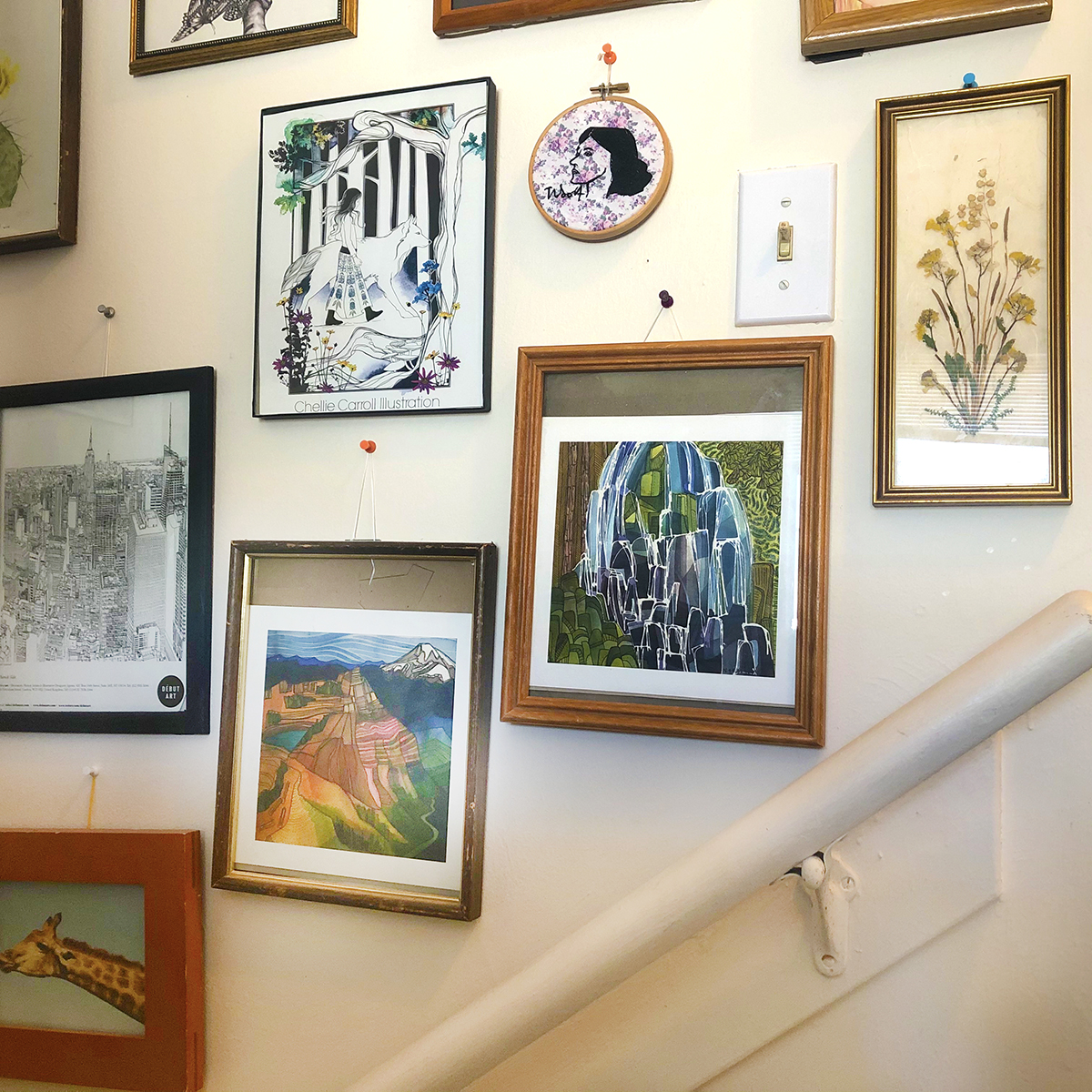
Landscape Abstraction from a U-M Alum
From the collection of:
Kathryn Beaton
Communications Coordinator
Artist: Lindsey Fox
Artwork Title(s): Ramona Falls and Knife's Edge, Goat Rocks
From Kathryn: I bought these two giclée prints from the Michigan-born (and UM alum), Oregon-based artist Lindsey Fox, who also works as a textile designer for Nike. In 2016, she hiked the full 2,650 miles of the Pacific Coast Trail as a 5-month artist residency. These are her depictions of Ramona Falls, Oregon (left) and the Knife's Edge, Goat Rocks, Washington (right), done with watercolors and ink pens.
The prints have the places’ exact geographical coordinates on the back, which I think is a fun detail. I love the bright jewel-tone colors and intricate patterns--as well as the fact that she regularly donates proceeds of her art sales to conservation groups.
(You might notice that I have hung them in ill-fitting frames with pushpins and dental floss. Please don’t judge.)
You can read more about Fox’s Landscape Abstraction project here. You can also follow her on Instagram at @lefoxstudio.
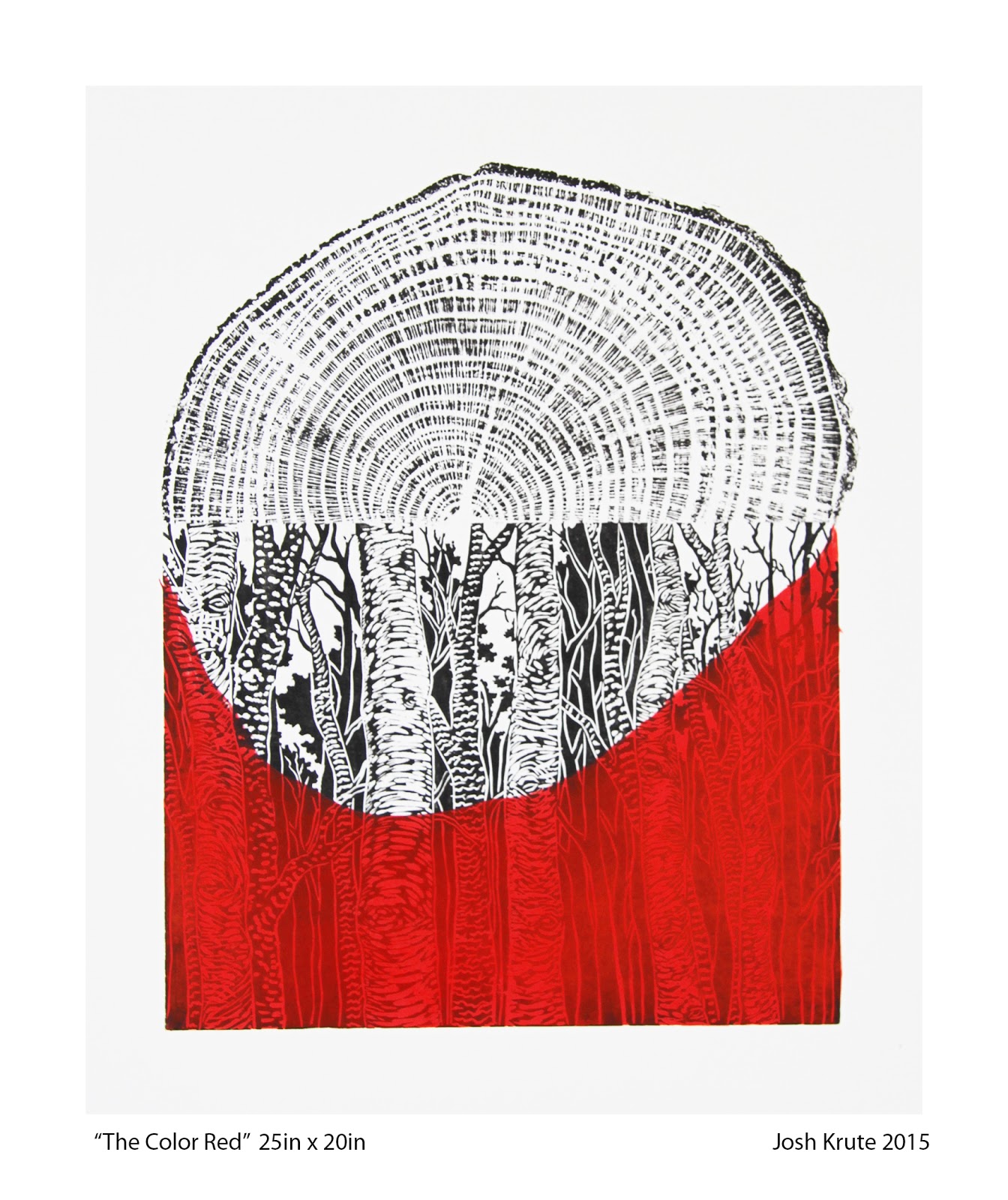
Two Ways With Natural Forms
From the collection of:
Isabel Engel
Mellon Academic Teaching Fellow
Artist: Josh Krute
Artwork Title: The Color Red from the Tzabar Series
From Isabel: Josh is a designer, a craftsperson, an artist living and working in Helsinki, Finland. In his practice, interdisciplinary making is driven by traditional and innovative intersections between technique, tooling, material, and his interests. He has realized that most of the furniture and objects he makes are culminating on a spectrum of art, craft, and product design sensibilities. Having completed a masters degree in the Contemporary Design program at Aalto University, Josh has learned to decipher as to where in this spectrum he places his practice.
This piece is from his Tzabar Series, where he took trees that were cut down to expand the EMX Bus Line in Eugene, OR. He then joined these prints with woodland like woodcuts to create these one of a kind prints. (Fun fact: I bought this from Josh from the back of his car as he was getting ready to move to Finland). Learn more about Josh and his work here.
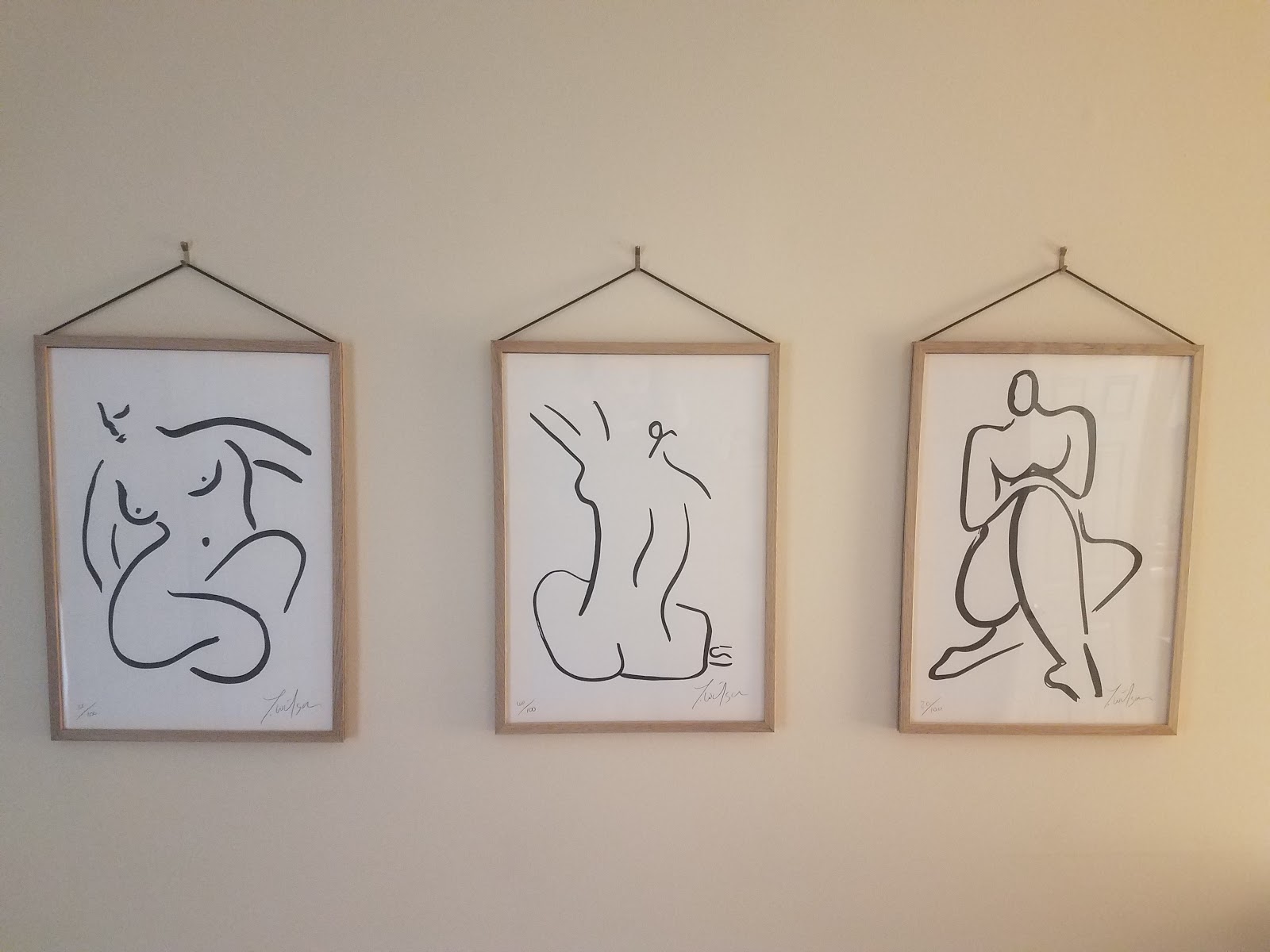
Artist: James Wilson
Artwork Title: Emily (left), Elise (middle), Anna (right)
From Isabel:
Inspired by the natural world, the human form and colour itself, James Wilson uses a balance of colours, textures and line to create bold and striking art. Primarily focusing on creating collections of original artworks, prints, wearable pieces and lifestyle products for your home and being.
These three pieces are meant to be representative of the “true” female form, embracing our natural curves. Read more about James and his work here.

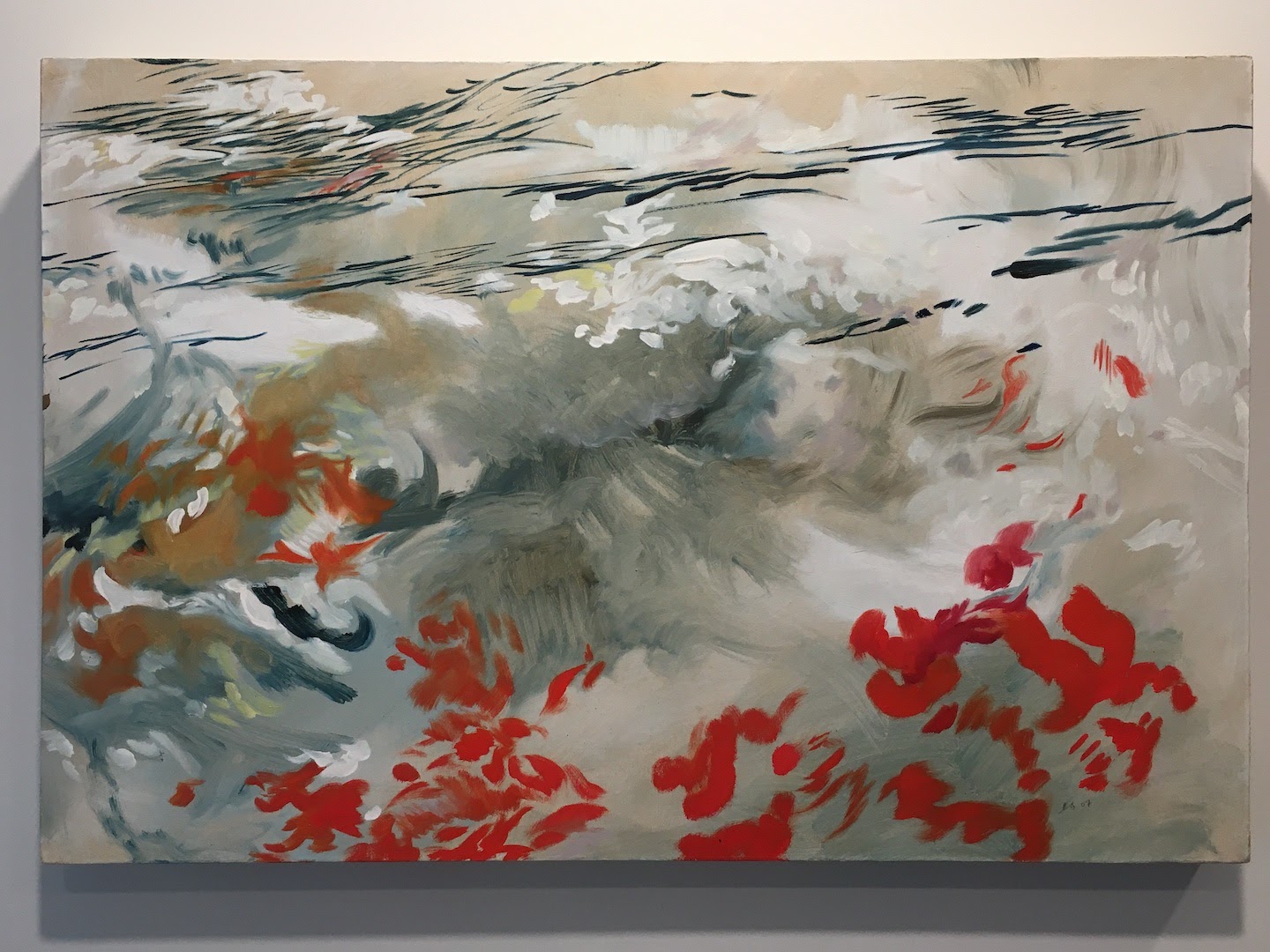

Fantastical Landscapes
From the collection of:
Grace VanderVliet
Curator for Museum Teaching and Learning
Artist: Leah Samuelson
Artwork Title: Untitled
From Grace: Trained in high-end commercial mural painting with a Chicago-based studio and also with the Philadelphia-based arts-intervention and education group BuildaBridge, Leah Samuelson now focuses on transformational pedagogy, socially engaged art curriculum development, and strategies of institutional collaboration through the arts. Projects currently in development use traditional Byzantine mosaic techniques to engage powerful and well-served communities in explorations of restraint. Community art projects may involve political, economic, social, religious, and ecological spheres in grappling with what it means to be good to our neighbors and good to ourselves.
About the works: The dresser is one of three dioramas that Leah created for her senior exhibition in undergrad, each boasting a fantastical landscape. Inside, the drawers contain ink drawings, which are currently hidden under my art supplies. The paintings feel like landscapes, or at least have elements that reference sky, water, clouds, branches, or fish. I like these because they aren’t too literal and are easy to live with. Leah’s work involves a lot of labor, which you can see in the intricate details, many layers, and visible brushstrokes, but each work is a playful experiment. For example, the doll house has a tiny stick ladder and super detailed interior, painted with a single-haired brush. I love surrounding myself with these joyful objects because they remind me of hours we spent in art class together.
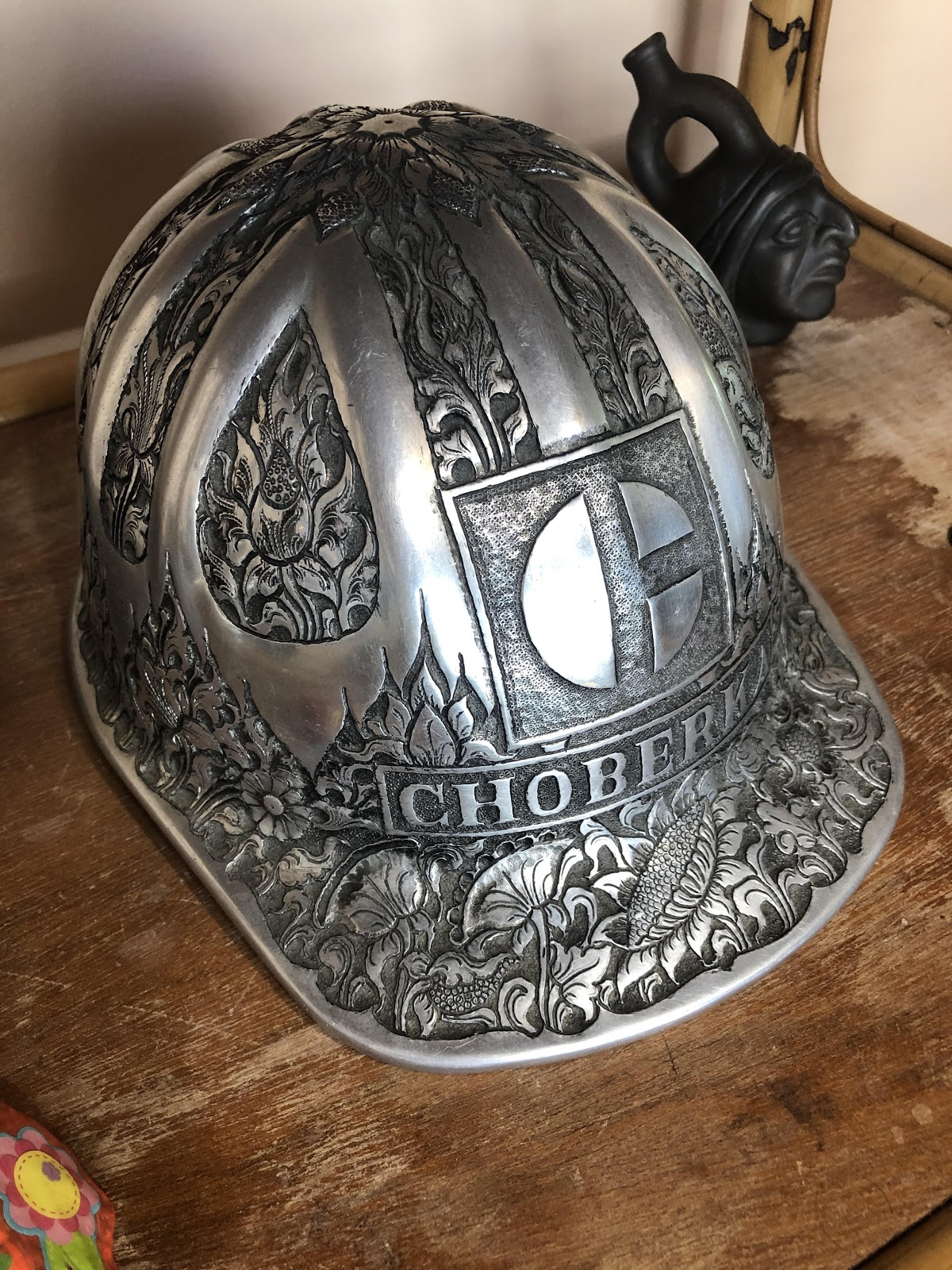
A Family Crest
From the collection of:
David Choberka
Curator for University Learning and Programs
Artist: Unrecorded
Artwork Title: Untitled (helmet for Paul Choberka
From David: This ornately patterned construction helmet was given to my father in the late 1970s by a mining company that he worked with in Indonesia. Paul Choberka worked for the Caterpillar construction equipment company for four decades and spent most of that time travelling the world to remote mining sites. I imagine the company made these special helmets for all of the Caterpillar employees that worked with them, but I like to think they made it special for my dad since he was such a great guy. It reminds me of him and how much he loved everyone and every place he had the opportunity to visit. It also makes me think of the mostly invisible labor of mine workers around the world, something that my dad witnessed first-hand and that made him increasingly supportive of worker and environmental protections throughout his life.
UMMA AT HOME
While UMMA is closed to the public, explore the many ways you can engage with the Museum, our collections, our educators, and our programs from your home.
